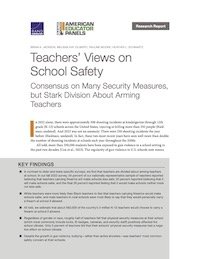By David Hemenway, Chloe Shawah, Elizabeth Lites
Background: In the past decade, most people who buy and own guns are doing so for self-defense. Yet little is known about actual defensive gun use in the USA.
Methods: To discover what information newspaper articles and local news reports might add, we read the news reports of defensive use incidents assembled by the Gun Violence Archive. We examined a sample of more than a quarter of the incidents from 2019, the last year before the pandemic. We examined all cases from four months-January, April, July, and October. We created a typology of defensive gun use incidents.
Results: Of 418 incidents, in about half, the perpetrator was armed with a firearm. In almost 90% of the cases, the victim fired their firearm-315 perpetrators were shot, and about half of them died. The average number of perpetrators shot per incident was 0.75; the average number of victims shot was 0.25. We estimate that in 2019 fewer than 600 potential perpetrators were killed in defensive gun use incidents that made the news. Among the thirteen categories of shooting were drug-related (4% of incidents), gang-like combat (6%), romantic partner disputes (11%), escalating arguments (13%), store robberies (9%), street robberies (5%), unoccupied vehicle theft (5%), unarmed burglaries (7%), home invasions (20%), and miscellaneous (6%).
Conclusion: We believe the Gun Violence Archive dataset includes the large majority of news reports of defensive gun use especially those in which the perpetrator is shot and dies. Some of the strengths of using news reports as a data source are that we can be certain that the incident occurred, and the reports provide us with a story behind the incident, one usually vetted in part by the police with occasional input from the victims, perpetrator, family, witnesses, or neighbors. Defensive gun use situations are quite diverse, and among the various categories of defensive gun use, a higher percentage of incidents in some of the categories seemed far less likely to be socially beneficial (e.g., drug-related, gang-like, escalating arguments) than in others (e.g., home invasions).
Injury Epidemiology 9:19, 2022.







